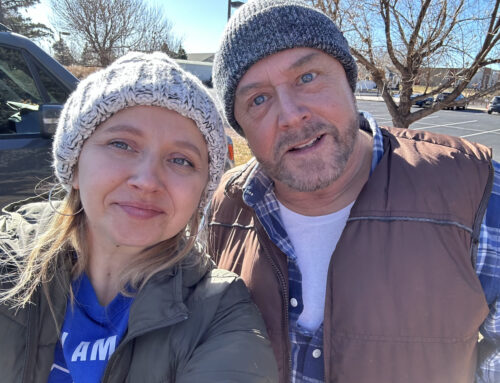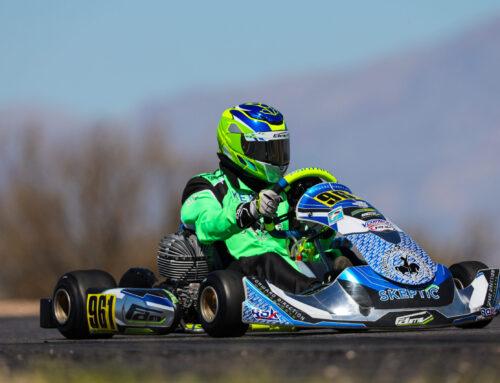By Megan Aikman (wife of a type 1 and mother of 2 type 1s) of Beyond the Syringe
Original post here
Last week I spoke to my 7 year old daughter’s class about diabetes. I did this last year too, and will likely do it every year until Walker and her 10 year old type 1 brother, Ollie, are comfortable taking on that role. Their classes travel together through the grades and their teacher follows them from 1st grade to 5th. This allows us to build upon new levels of understanding and compassion each year. The children become like a family and they watch out for each other and take care of the needs of their friends.

So into the classroom and this is how I explain Type 1 to children:
All of us need energy to make our muscles, and our heart, and our brain do the work they need to do. We get our energy from the food we eat. We eat this food and it goes into our belly and our belly works to turn all this food into energy, or sugar. This sugar goes into our blood so that it can be carried around to all the different parts of our body that need it. For people like you and me, who don’t have Type 1 diabetes, this sugar moves into our muscles and we don’t have to do anything. But for people like Walker, and Ollie, and their dad this isn’t how it works. The food they eat still turns into sugar and gets sent into their blood, only it gets stuck there. It can’t move from the blood into the muscles without some medicine. I like to think of this medicine like keys that unlock doors. If they eat 3 crackers, then they need 3 keys to let this sugar go into the muscles. Every time they eat they need to also add some keys. But sometimes they might not get enough keys to let all the crackers in and then their blood sugar gets high. Or sometimes they get too many keys and then it lets more sugar into the muscles than is supposed to be there and then their blood sugar gets low.
So when their blood sugar is too low, the only way we can get it up is to add sugar. The quickest way to do this is with juice or candy, like the candy they carry in their packs. This isn’t a treat, it’s just as important as their medicine.
If you were to see Walker acting funny, in a way that’s not like her normal funny self, but more like stumbling around or saying nonsense words, you should let a teacher or grown up know. Or, if you were to find her asleep on the ground, you should definitely run to a grown up. Her blood sugar is probably very, very low and she would need our help to be safe and we would give her juice or special medicine to bring her blood sugar up.
She also might act sleepy or really grumpy. Sometimes she has to pee a lot, or is very thirsty. This probably means her blood sugar is high. Normally this isn’t as dangerous, or at least not so dangerous you need to run and find a grown up. When her blood sugar is high it means she needs a little extra insulin, or those keys we talked about, to bring her blood sugar down. Just be patient with her, and if you’re really concerned you can always talk to a grown up.
At this point in my talk with the children they usually have lots of questions. The things they ask are quite amazing, better than any questions I’ve heard a lot of adults ask. I appreciate the bluntness of the questions. Things like:
“How did she get diabetes?” We don’t know. Even her doctor doesn’t know for sure. We do know that her body just decided to treat her pancreas like it didn’t belong to her anymore. Sometimes a cold or the chicken pox or some other illness confuses the body and it starts fighting with her pancreas. Something in her body, something that she was born with that has always been there, just switches on and confuses her body like this.
“Is it contagious?” No. You cannot catch diabetes.
“Will she grow out of it? Will it go away?” No. She’ll always have diabetes, until they find a cure.
“What happens if her blood sugar gets too low?” She could get very, very sick. She could even die. But that’s why we check her blood sugar so much, and have candy and snacks all around the school, and she wears her CGM (and her adults can see her blood sugar on their phones). All these things keep her safe so that hopefully her blood sugar never gets so low.
“What happens if her blood sugar gets too high?” She can still get very sick, but it doesn’t happen as quickly as low blood sugar can happen. If she doesn’t get her medicine to bring her blood sugar down that can be very dangerous. But like I said, this takes a little longer to happen so she can get the help she needs before then.
“Can she do everything that everyone else does?” Yes, yes, absolutely yes. It just might take a little more planning and attention, but there is NOTHING someone with Type 1 diabetes cannot do.
“Does she like to eat all that candy? I wish I got to eat as much candy as she does!” It might surprise you, but no, she doesn’t really like to have to eat all this candy. It’s not as fun to have to eat sweets when you’re not in the mood for it. And by now she thinks of candy as something she has to do when her blood sugar is low, and that’s not a good feeling for her.
“I HATE shots! I would never be able to take so many shots.” I know, and Walker doesn’t like shots either. But she doesn’t have a choice because if she didn’t get all these shots then she’d get very very sick.
“Wow, Walker’s really brave.”
At which point I try to breathe through the welling of tears and bring our discussion to a close.
There are no stupid questions. I’d rather answer the same question 20 times than have someone assume misinformation. Only through understanding will my family, and all their Type 1 friends, be safe.





